Key takeaways
- Epistemology encourages critical thinking about the nature of knowledge, questioning beliefs, and understanding their justification.
- Feyerabend promotes “epistemological anarchism,” advocating for diverse methods in knowledge acquisition, embracing creativity and contradictions.
- Analyzing philosophical texts involves slow reading, mapping arguments, and contextualizing content to deepen understanding.
- Incorporating flexible and dynamic approaches in philosophy education nurtures intellectual freedom and promotes active student engagement.
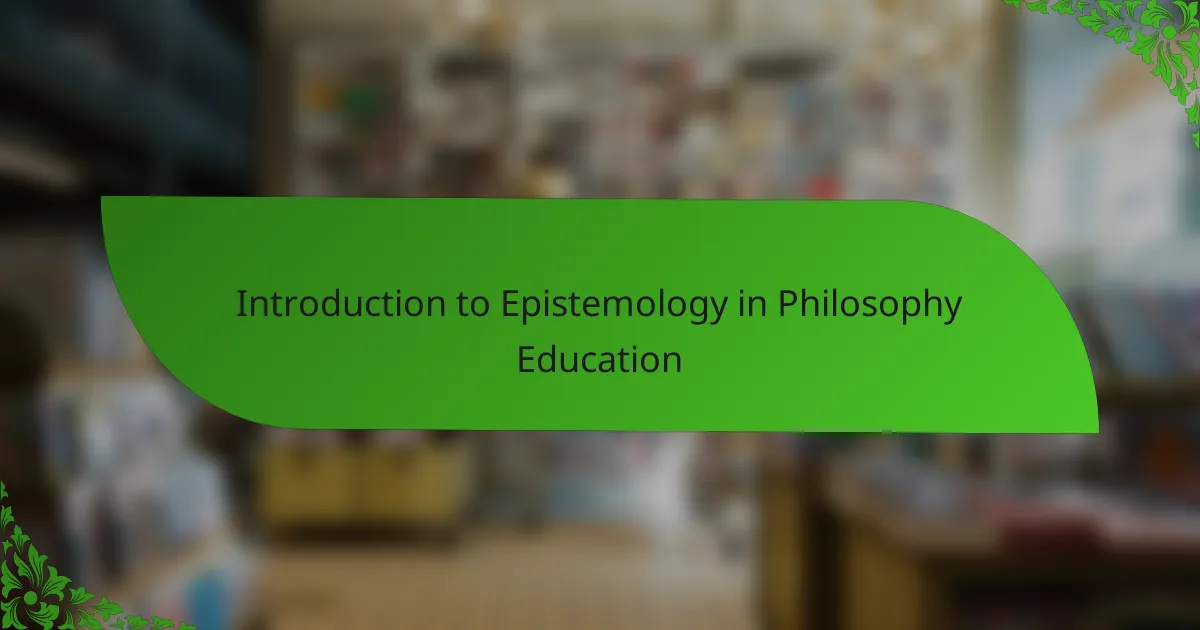
Introduction to Epistemology in Philosophy Education
Epistemology, at its core, explores the nature and limits of knowledge. When I first encountered this branch of philosophy, I found myself questioning not just what I know, but how I know it—and that shift in perspective was genuinely eye-opening.
In philosophy education, introducing epistemology invites students to grapple with deep questions: Can we ever be certain about anything? What counts as justified belief? These inquiries aren’t just abstract—they challenge the way we view the world daily.
Reflecting on my own experience, grappling with epistemology felt like peeling back layers of assumptions I didn’t even realize I had. Have you ever stopped to consider what makes your beliefs trustworthy? That’s exactly the kind of critical thinking philosophy education aims to nurture.
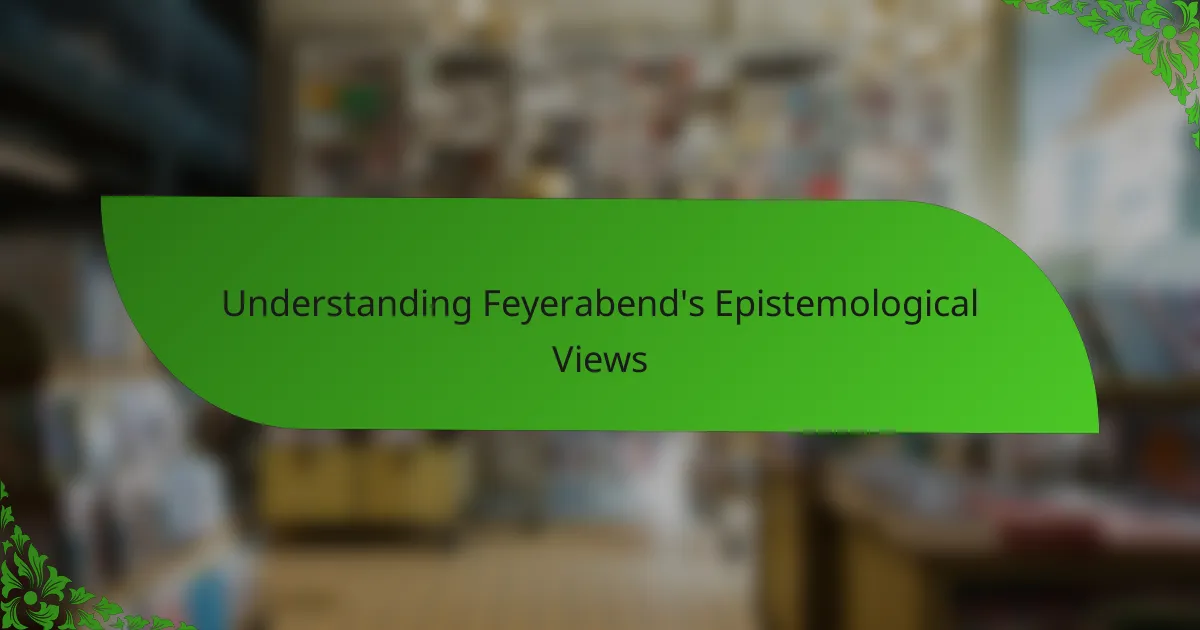
Understanding Feyerabend’s Epistemological Views
Feyerabend’s take on epistemology initially struck me as refreshingly rebellious. Instead of seeking fixed rules or universal methods, he argued knowledge evolves through a mix of creativity, chaos, and even contradictions. Have you ever felt restricted by rigid rules in learning? That’s exactly what Feyerabend challenged.
What I find most compelling is his idea that no single scientific method holds a monopoly on truth. This opened my eyes to the value of diverse approaches and perspectives, reminding me that progress often springs from breaking conventions. Could it be that embracing disorder is actually a path to deeper understanding?
At times, I struggled to reconcile his relativism with the search for reliable knowledge. But over time, I realized Feyerabend’s epistemology isn’t about abandoning reason; it’s about acknowledging how knowledge grows in messy, unpredictable ways. Isn’t that closer to how we actually experience learning and discovery?
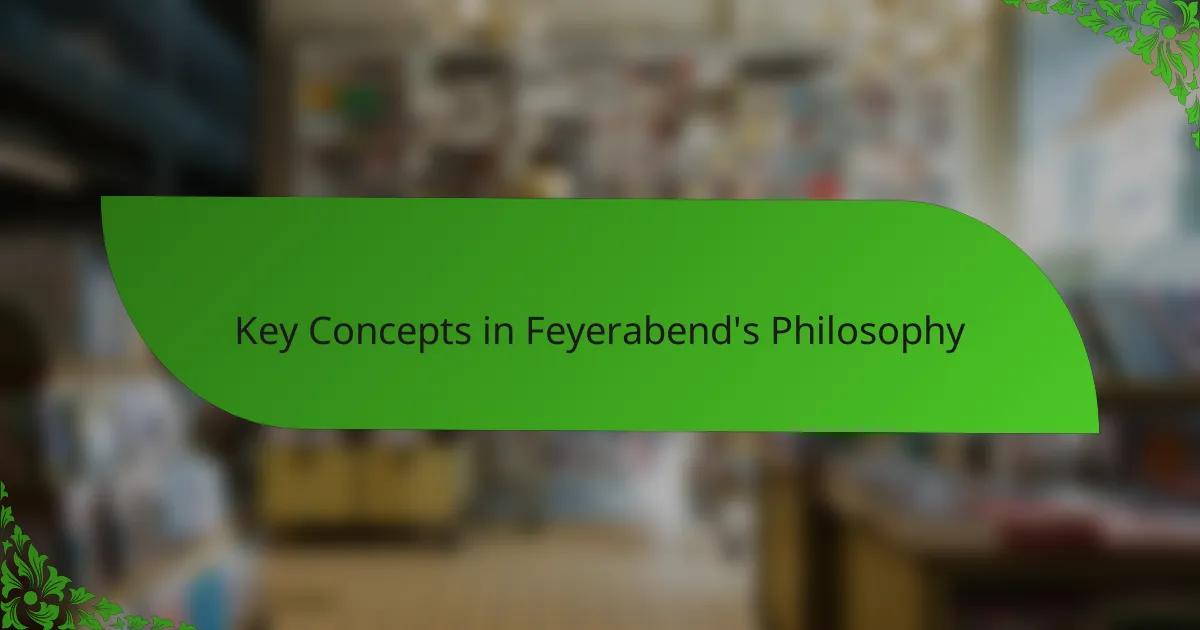
Key Concepts in Feyerabend’s Philosophy
Feyerabend’s philosophy pivots around the idea of “epistemological anarchism,” which simply means rejecting strict rules about how knowledge must be obtained. When I first came across this, it felt like a breath of fresh air—I realized that insisting on one method might actually limit our understanding rather than enhance it. Have you ever noticed how some breakthroughs happen exactly because someone dared to break the “rules”?
Another core concept is his critique of methodological monism, the belief that science should follow a single, unified method. Feyerabend argued that history shows scientists often succeed by mixing methods in surprising ways. Reflecting on this, I began to appreciate how creativity and even contradictions aren’t just obstacles but essential drivers of discovery.
What really resonated with me is his idea that “anything goes” isn’t chaos without meaning, but rather an invitation to embrace intellectual freedom. It made me wonder: could rigid adherence to a method blind us to valuable insights? For me, embracing Feyerabend’s view means recognizing that knowledge is more like an organic, evolving conversation than a neatly packaged solution.
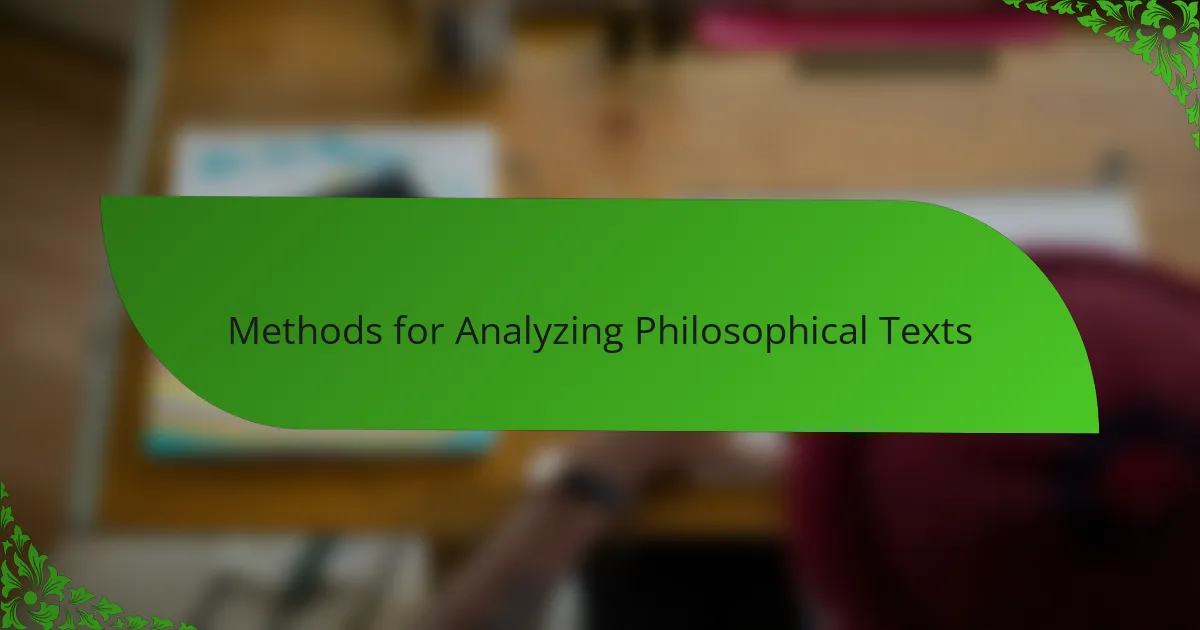
Methods for Analyzing Philosophical Texts
When I dive into a philosophical text, I start by reading slowly and attentively, almost like having a conversation with the author. I ask myself: What is the core argument here? This method helps me not only understand the ideas but also uncover the nuances that often hide between the lines.
Another technique I rely on is mapping out the structure of the argument. Breaking it down into premises and conclusions clarifies the logic and reveals any gaps or assumptions. Have you ever noticed how some arguments feel airtight until you actually outline them? That’s when the real analysis begins.
Finally, I find it invaluable to contextualize the text—considering the historical, cultural, and personal background of the philosopher. Knowing the environment in which ideas emerged adds layers of meaning and often surprises me with fresh insights. It’s like seeing a familiar painting under a new light, and it makes the whole reading experience richer.
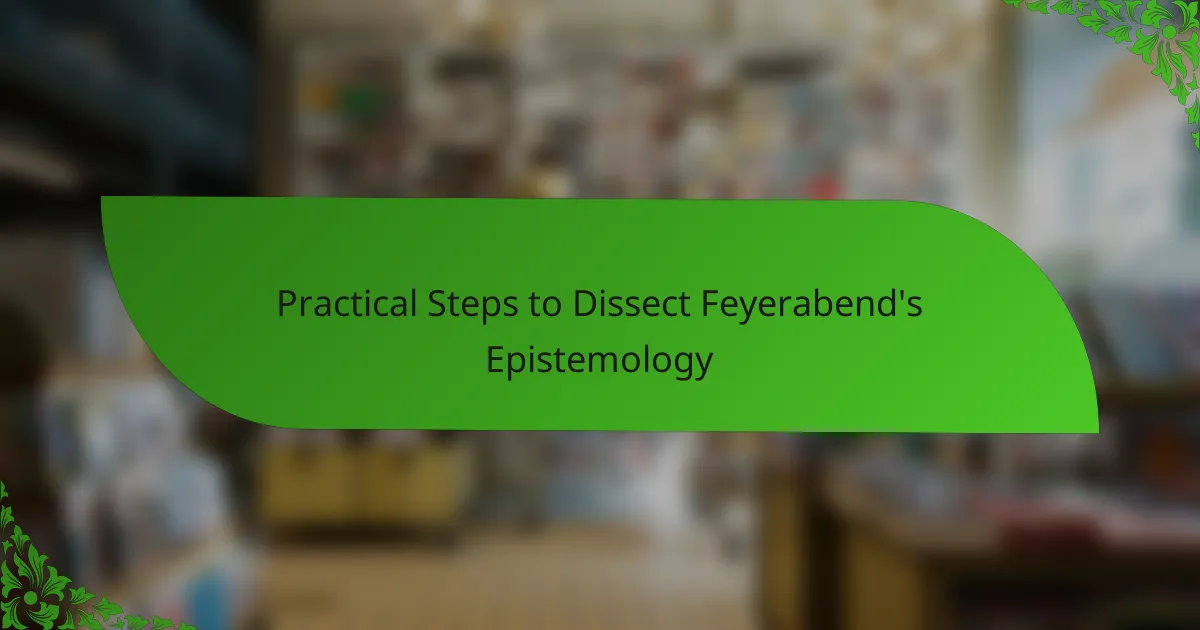
Practical Steps to Dissect Feyerabend’s Epistemology
One practical step I took to dissect Feyerabend’s epistemology was to trace how his ideas challenge traditional scientific methods. I found it helpful to identify specific examples where he illustrates the success of “anything goes” in scientific progress. Have you ever paused to think why some scientific breakthroughs look chaotic at first? That question guided my analysis and deepened my understanding.
Another approach I used was to compare Feyerabend’s arguments directly with opposing epistemological views. This contrast not only sharpened my grasp of his critiques but also illuminated the broader debate about knowledge and methodology. When you place conflicting ideas side by side, don’t you find your own position clearer? For me, this comparison turned abstract debates into something tangible and alive.
Lastly, I reflected personally on how Feyerabend’s epistemological anarchism resonates with my own learning experiences. Embracing unpredictability and contradictions felt less like intellectual risk and more like freeing myself from rigid thought patterns. Have you ever felt stuck by following one “correct” way to think? Recognizing the value of intellectual freedom allowed me to appreciate Feyerabend’s philosophy as a practical, liberating framework rather than mere theory.
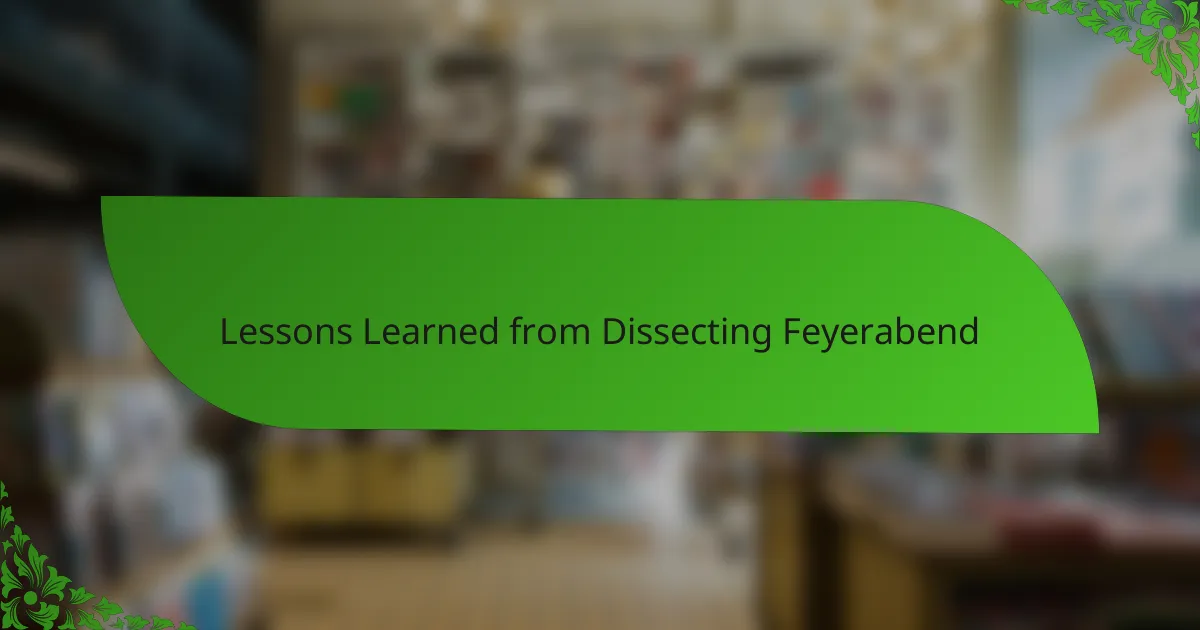
Lessons Learned from Dissecting Feyerabend
Dissecting Feyerabend taught me that embracing intellectual freedom is not just an abstract ideal but a practical way to think more creatively. I realized how often I’ve boxed myself into rigid methods, only to find later that stepping outside those boundaries sparked genuine insight. Have you noticed how sometimes the most unexpected ideas come from breaking the “rules” you thought were set in stone?
Another lesson was appreciating the messy, non-linear nature of knowledge evolution. Feyerabend’s perspective reminded me that disorder and contradiction aren’t obstacles to understanding—they’re often its fuel. It made me wonder: what if accepting complexity instead of seeking tidy answers could actually make us better learners?
Finally, the act of dissecting his philosophy showed me the importance of questioning my own epistemological assumptions regularly. It’s easy to settle into comfortable ways of knowing, but Feyerabend challenged me to keep pushing, keep questioning, and keep allowing room for diverse perspectives. Isn’t that what true philosophical education should feel like—a continuous, dynamic exploration rather than a fixed destination?
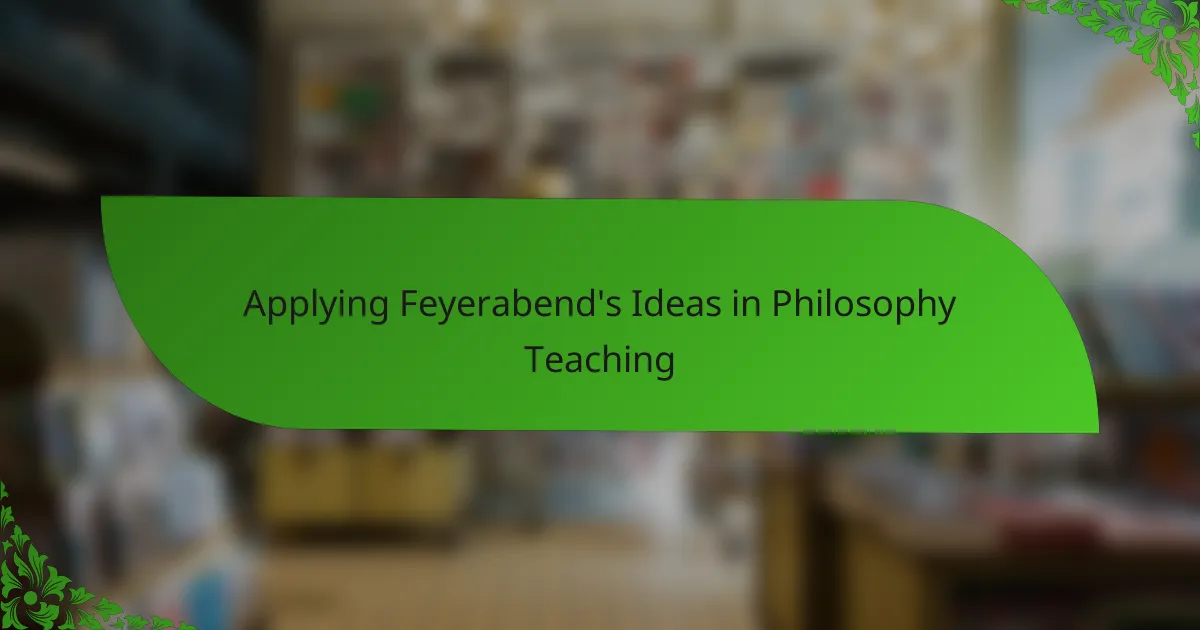
Applying Feyerabend’s Ideas in Philosophy Teaching
Applying Feyerabend’s ideas in philosophy teaching means inviting students to break free from rigid methods and explore knowledge through a mix of creativity and skepticism. I’ve found that encouraging learners to question prescribed ways of thinking sparks more dynamic discussions and helps them see philosophy as an evolving conversation, not a set of fixed rules. Have you ever noticed how freeing it is when students realize that “there’s no one right way” to approach a problem?
In my experience, incorporating Feyerabend’s epistemological anarchism also means embracing contradictions and diverse viewpoints in the classroom. Instead of pushing students toward a single conclusion, I encourage them to voice conflicting ideas and appreciate how these tensions drive deeper understanding. This shift from aiming for “the right answer” to exploring multiple angles makes philosophy feel more alive and relevant.
What I keep coming back to is how Feyerabend’s approach nurtures intellectual freedom and curiosity. By allowing room for chaos and unpredictability, students become active participants in knowledge creation rather than passive recipients. Doesn’t that sound like the kind of learning experience we all want—to be challenged, surprised, and inspired?